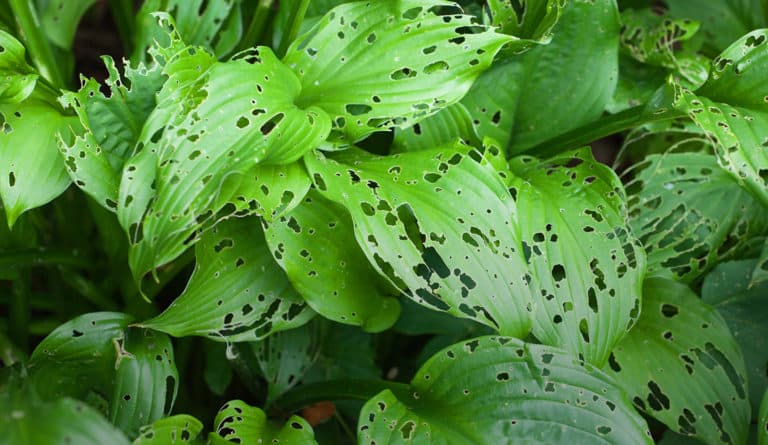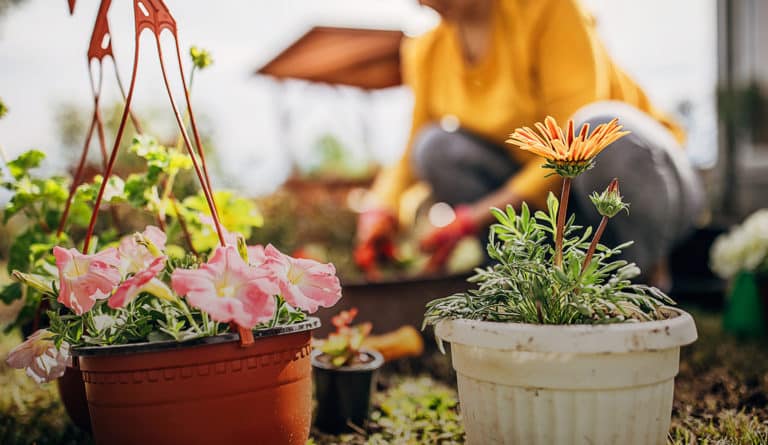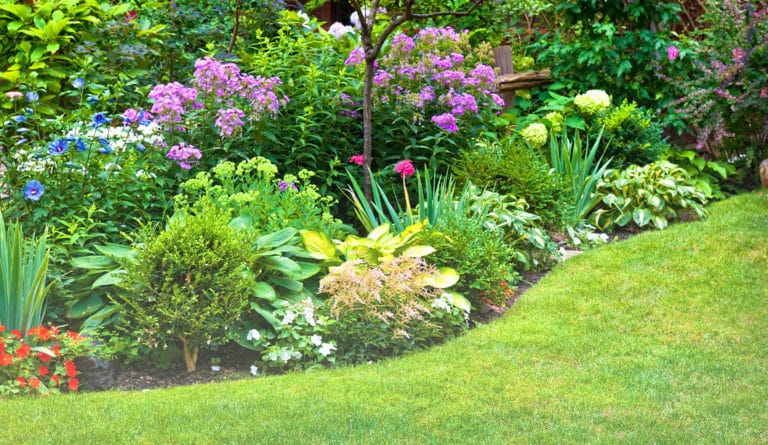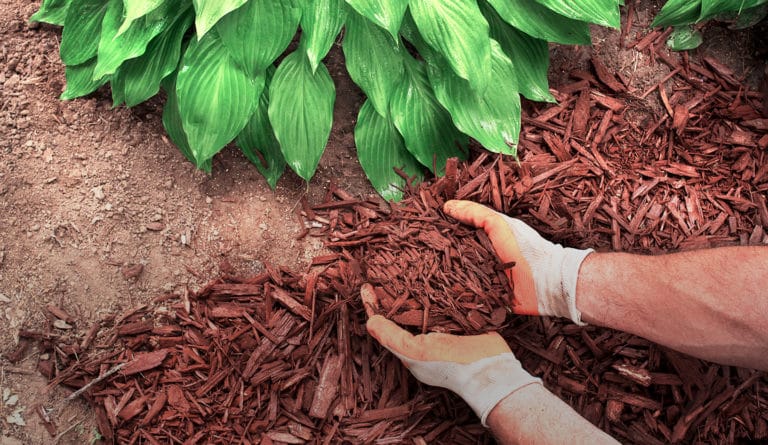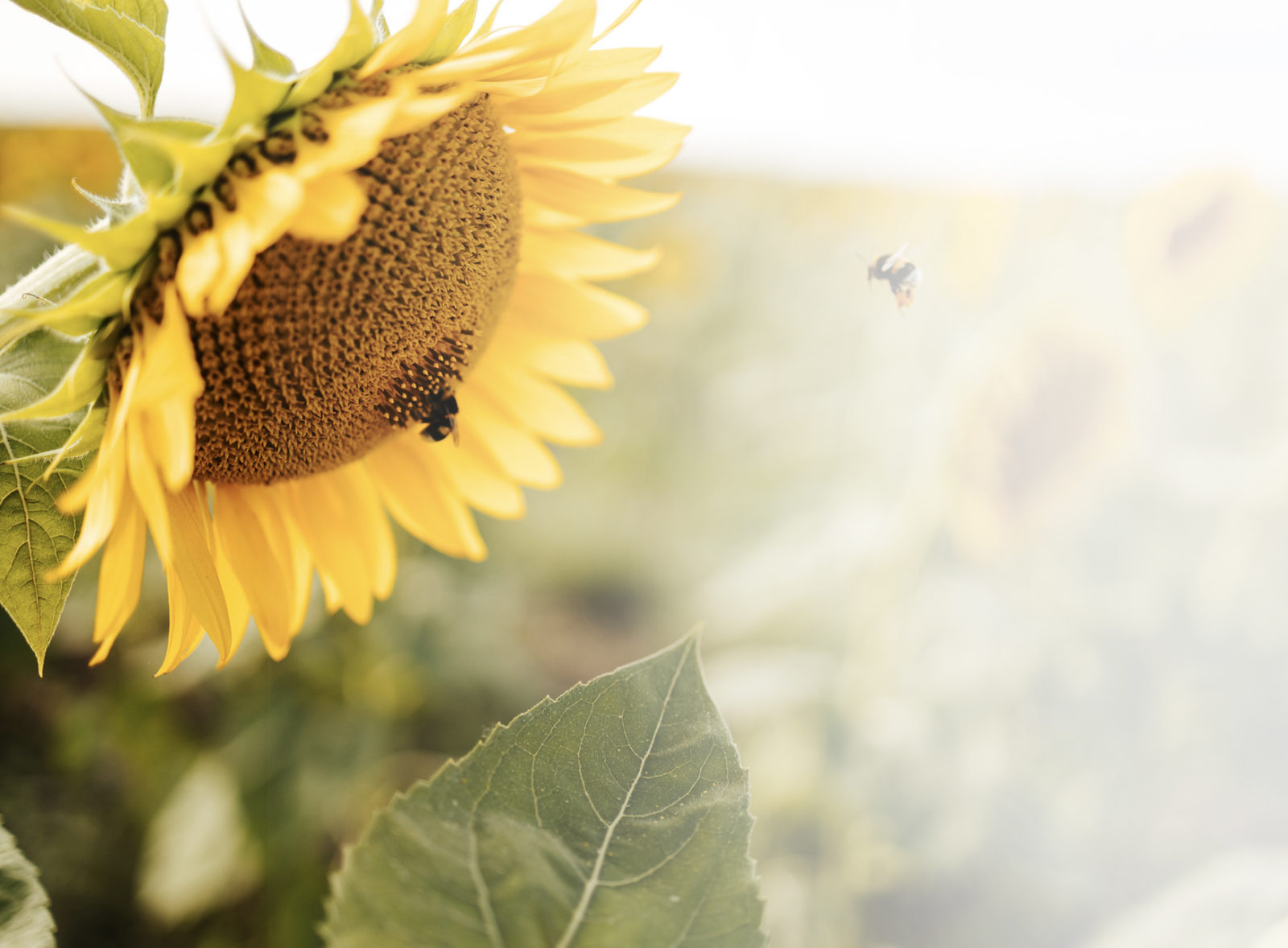
sunflowers
aka helianthus anuus l.
Sunflowers are an annual plant with a big, daisy-like flower head. These flowers are heliotropic, meaning they turn their heads to follow the sun across the sky.
variations
There are many variations of sunflowers, but most commonly there are sunflowers with branching stems or single stems. You can also choose from sunflowers that produce pollen, pollen-free or ones that produce edible seeds.
light
full sun
Sunflowers need full sun for optimal growth, about 6 hours of sunlight daily.
water + feeding
not too thirsty
Once established, sunflowers don’t need frequent watering. But they do need deep watering. Overfertilizing can cause stems to break as well. Dillute any fertilizer and avoid the sunflower’s base.
toxic
non-toxic
Sunflowers are safe for humans and animals.
size
medium to large
The smaller, indoor grown varieties grow to about a foot tall. The bigger, outdoor varieties can grow up to 16 feet tall.
pro tip
stationary beauties
Sunflowers don’t like having their roots disrupted. It’s best to plant them in the spots that they’re intended to stay.
fun fact
herb or flower?
Sunflowers are kind of both. They’re listed as a herb in Encyclopedia Britannica, but also have big flowering heads.

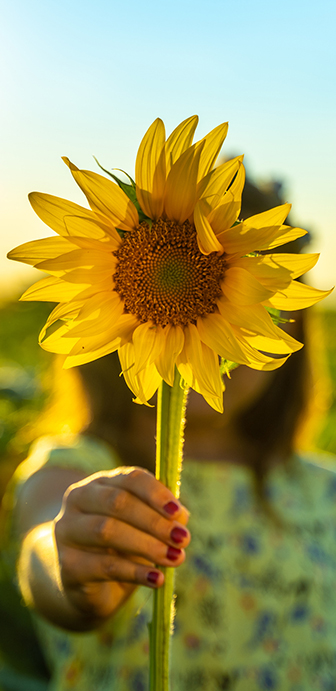
beyond the basics
-
soil + potting
Sunflowers are not sensitive to the pH level of soil. Use an well-draining soil like Miracle Gro® All Purpose Garden Soil and introduce a water soluble fertilizer about halfway through the summer.
-
companion planting
Sunflowers pair well with many other plants. Consider pairing with shade-loving plants. Sunflowers can cast some shade on veggies like cucumbers or lettuce. Due to their flexible soil needs, they can be planted alongside plants like bush bean varieties, like lima beans or green beans.
-
blooms
To encourage side blooms, cut indoor varieties on the main stem just before the flower bud has a chance to open. Cut stems in the early morning vs the afternoon to avoid flower wilting. For cut sunflower bouquets, ensure their container provides enough support for their heads. Change the water daily to keep them fresh.
-
pest control
Birds and squirrels love to scavenge sunflower seeds. Consider covering the head of the plant with garden fleece or protect them with a tall, wire barrier.
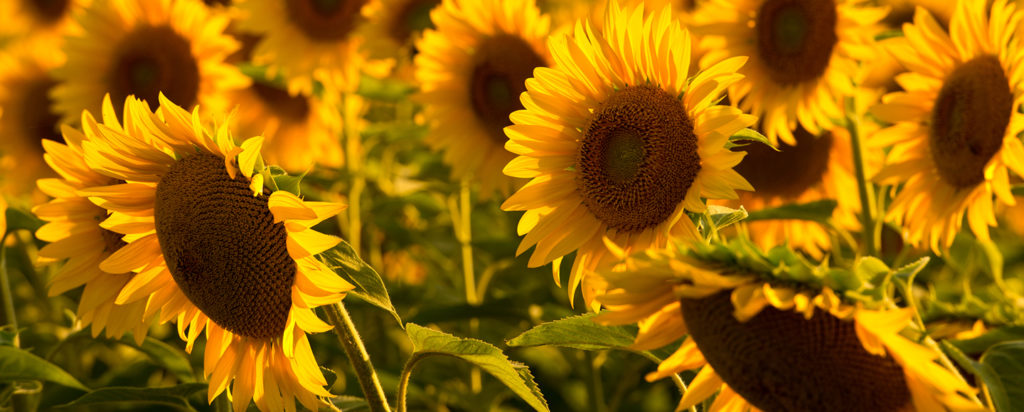
troubleshooting
-
what are these tiny worms?
They’re probably gray moths. Sunflowers are pretty much pest-free. If you see tiny worms in the head of the sunflower, it’s likely they’re gray moths. Just pick them off the plant.
-
why are my sunflowers losing leave?
Could be grasshoppers and caterpillars. These little guys enjoy snacking on the leaves of sunflowers. This doesn’t usually damage the plant, but if there are a lot of these pests, they can defoliate your sunflower quickly.
-
what do spotty leaves mean?
Could be rust, verticillium wilt or mildew. The damaged leaves will fall off as the disease progresses. Control fungi through proper removal and disposal of infected plants and with a general fungicide.
-
why are my sunflower’s leaves wilting?
Probably white mold. This is a fungus that causes wilting leaves, stem cankers and root rot. Crop rotation can usually prevent this from happening, as well as maintaining proper watering practices.

begonias
aka begoniaceae or begonia semperflorens
Begonias are popular houseplants and shaded garden beds. They have tropical/sub-tropical origins, and are known for their interesting, asymmetrical leaves. They add a bright punch of colour to a garden bed because of their bright, small flowers and variegated leaves.
variations
Wax begonias, Tuberous begonias, Cane begonias, Rhizomatous begonias, Rex begonias
light
filtered sun
Partial shade or filtered light
water + feeding
not too thirsty
Regular watering is important for healthy plants. The soil should remain moist at all times, but not too wet, as this can cause root rot. Water at the base of the plant to keep the foliage dry and prevent leaf spot and fungal diseases. For general growing purposes, apply a balanced water-soluble fertilizer once a month in the growing season. For plants grown strictly for their foliage, like angel wings, use a fertilizer that is higher in nitrogen.
toxic
somewhat
Although its most toxic parts are underground, it’s still best to keep begonias out of reach of your pets
size
mostly medium
Wax begonias: Wax begonias are typically grown as annuals, reaching 6 to 12 inches tall and wide. Tuberous begonias: They also have a larger growth habit than wax begonias, growing 12 to 18 inches tall as houseplants and up to 3 feet or more in outdoor containers. Cane begonias: Their size varies with growing conditions, from 6- to 12-inch houseplants to bushy plants up to 5 feet. Rhizomatous begonias: Sizes vary from just a few inches to large plants up to 3 feet tall and wide. Rex begonias: generally reach 12 to 18 inches tall and wide.
pro tip
happily root-bound?
Potted begonias prefer to be slightly root-bound rather than given too much room. Only repot when necessary, and preferably in spring before plants are moved outside and start actively growing. Select darker-leaved varieties or types with improved heat and sun tolerance for sunnier spots.
fun fact
cousins to pumpkins
The flower is related to pumpkins, squash, gourds, cucumbers and melons. Tuberous and wax begonias are edible and have a citrusy taste. The name Begonia honours Michel Begon, a former governor and amateur botanist.
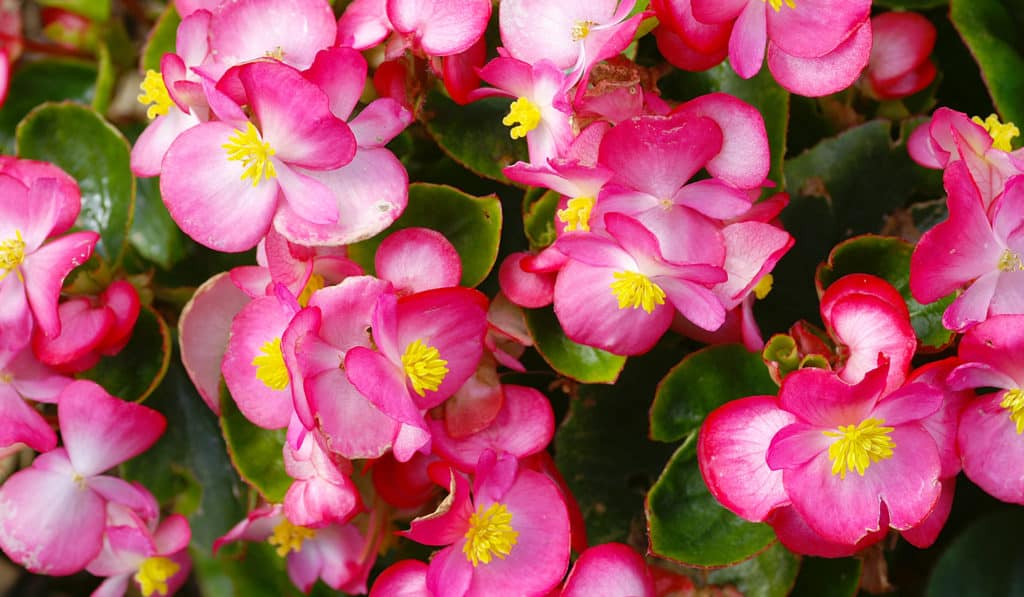
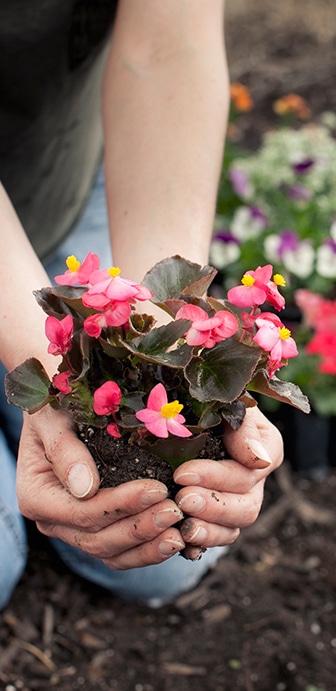
beyond the basics
-
soil & potting
All begonias like evenly moist, well-draining soil with some added organic matter. Plant wax begonia transplants 6 to 8 inches apart and others according to their mature size. Tubers can be started indoors by placing the tubers, hollow side up, 1 inch apart in a shallow tray with moist potting mix. Place the tray in a dark room and water just enough to keep the potting mix moist, but not soggy. Tubers should sprout in about 4 weeks and be moved to an area with bright light once the sprouts are about an inch tall. Only plant outdoors when there is no longer a threat of frost.
-
companion planting
Begonias look great planted together, or with cascading annuals like alyssum and lobelia. Try pairing them with Hosta or Bergenia in shade gardens.
-
blooms
When cutting back rhizomatous or wax types, make a clean, angled cut just above a leaf or flower node. To encourage fuller growth, younger plants (under 3 years) can be cut back to one or two nodes above the soil. Plants that are older should only be pruned lightly.
For cane begonias, pinch the tops when plants are about 6 inches tall to encourage bushier growth. Cut any canes that are much taller than the rest of the plant back to the soil. Remove old, brown, bare, or dead canes to the soil. Younger plants can be cut back by about 1/2.
Rex begonias require little pruning. Pinch back young plants to encourage fuller growth, and remove any leggy or bare stems as needed.
For all types, cut off spent begonia flowers about 1/2-inch below the flower to keep plants clean and healthy, as well as promote more blooms.
-
pest control
Susceptible to powdery mildew, mealybugs, spider mites, thrips, and whitefly. Stem rot and rhizome rot can be caused by overwatering and soggy soil.
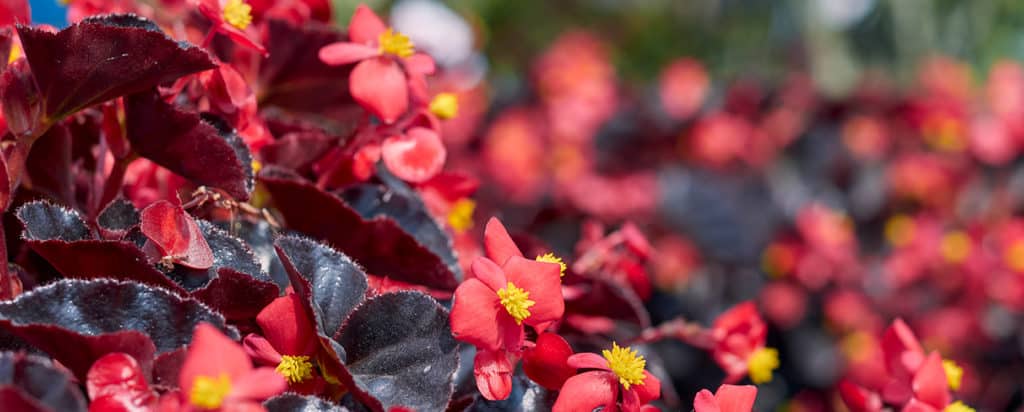
troubleshooting
-
spotted flowers?
Blooms may be damaged by improper watering. Your Begonia’s flowers are likely getting brown or transparent blotches where water drops have soaked through the petal. To prevent this, shield your petals when watering or be sure to hold the hose close to the soil versus above the plant.
-
white, powdery leaves?
This is mildew caused by a fungus that lives on the surface of your plant. Mildew will coat your Begonias in a white or gray powdery mold. Mildew will cause your Begonia’s leaves to discolour and drop off. To avoid this, be sure to allow adequate space between plants and collect any debris that falls around the base of the plant. Be sure not to overwater your plant!
-
dropping buds?
Could be caused by either over or under watering your plant, especially if they dry out completely between watering. Although tuberous begonias do best when the soil surface dries out slightly between waterings, try not to let them dry out completely. A sudden temperature change from hot to cold could also cause buds to drop off.
-
faded flowers?
Could be a result of a fungal disease that often results from poor ventilation, insufficient light or high humidity. Remove those faded flowers and be sure that your Begonias are planted in a well-ventilated area that receives adequate light, versus in a shady area. If the growing season is especially humid, gray mold may appear despite precautions. In such a case, destroy infected plant parts, and spray buds and blooms with flowable sulfur fungicide every 3 to 5 days.

begonias
aka begoniaceae or begonia semperflorens
Begonias are popular houseplants and shaded garden beds. They have tropical/sub-tropical origins, and are known for their interesting, asymmetrical leaves. They add a bright punch of colour to a garden bed because of their bright, small flowers and variegated leaves.
variations
Wax begonias, Tuberous begonias, Cane begonias, Rhizomatous begonias, Rex begonias
light
filtered sun
Partial shade or filtered light
water + feeding
not too thirsty
Regular watering is important for healthy plants. The soil should remain moist at all times, but not too wet, as this can cause root rot. Water at the base of the plant to keep the foliage dry and prevent leaf spot and fungal diseases. For general growing purposes, apply a balanced water-soluble fertilizer once a month in the growing season. For plants grown strictly for their foliage, like angel wings, use a fertilizer that is higher in nitrogen.
toxic
somewhat
Although its most toxic parts are underground, it’s still best to keep begonias out of reach of your pets
size
mostly medium
Wax begonias: Wax begonias are typically grown as annuals, reaching 6 to 12 inches tall and wide. Tuberous begonias: They also have a larger growth habit than wax begonias, growing 12 to 18 inches tall as houseplants and up to 3 feet or more in outdoor containers. Cane begonias: Their size varies with growing conditions, from 6- to 12-inch houseplants to bushy plants up to 5 feet. Rhizomatous begonias: Sizes vary from just a few inches to large plants up to 3 feet tall and wide. Rex begonias: generally reach 12 to 18 inches tall and wide.
pro tip
happily root-bound?
Potted begonias prefer to be slightly root-bound rather than given too much room. Only repot when necessary, and preferably in spring before plants are moved outside and start actively growing. Select darker-leaved varieties or types with improved heat and sun tolerance for sunnier spots.
fun fact
cousins to pumpkins
The flower is related to pumpkins, squash, gourds, cucumbers and melons. Tuberous and wax begonias are edible and have a citrusy taste. The name Begonia honours Michel Begon, a former governor and amateur botanist.
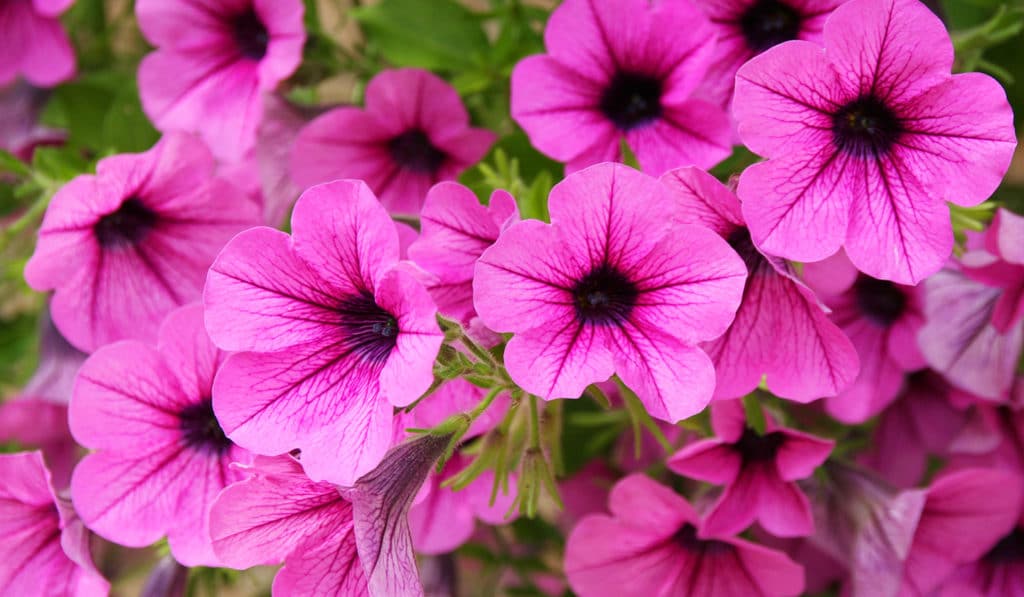

beyond the basics
-
soil & potting
All begonias like evenly moist, well-draining soil with some added organic matter. Plant wax begonia transplants 6 to 8 inches apart and others according to their mature size. Tubers can be started indoors by placing the tubers, hollow side up, 1 inch apart in a shallow tray with moist potting mix. Place the tray in a dark room and water just enough to keep the potting mix moist, but not soggy. Tubers should sprout in about 4 weeks and be moved to an area with bright light once the sprouts are about an inch tall. Only plant outdoors when there is no longer a threat of frost.
-
companion planting
Begonias look great planted together, or with cascading annuals like alyssum and lobelia. Try pairing them with Hosta or Bergenia in shade gardens.
-
blooms
When cutting back rhizomatous or wax types, make a clean, angled cut just above a leaf or flower node. To encourage fuller growth, younger plants (under 3 years) can be cut back to one or two nodes above the soil. Plants that are older should only be pruned lightly.
For cane begonias, pinch the tops when plants are about 6 inches tall to encourage bushier growth. Cut any canes that are much taller than the rest of the plant back to the soil. Remove old, brown, bare, or dead canes to the soil. Younger plants can be cut back by about 1/2.
Rex begonias require little pruning. Pinch back young plants to encourage fuller growth, and remove any leggy or bare stems as needed.
For all types, cut off spent begonia flowers about 1/2-inch below the flower to keep plants clean and healthy, as well as promote more blooms.
-
pest control
Susceptible to powdery mildew, mealybugs, spider mites, thrips, and whitefly. Stem rot and rhizome rot can be caused by overwatering and soggy soil.

troubleshooting
-
spotted flowers?
Blooms may be damaged by improper watering. Your Begonia’s flowers are likely getting brown or transparent blotches where water drops have soaked through the petal. To prevent this, shield your petals when watering or be sure to hold the hose close to the soil versus above the plant.
-
white, powdery leaves?
This is mildew caused by a fungus that lives on the surface of your plant. Mildew will coat your Begonias in a white or gray powdery mold. Mildew will cause your Begonia’s leaves to discolour and drop off. To avoid this, be sure to allow adequate space between plants and collect any debris that falls around the base of the plant. Be sure not to overwater your plant!
-
dropping buds?
Could be caused by either over or under watering your plant, especially if they dry out completely between watering. Although tuberous begonias do best when the soil surface dries out slightly between waterings, try not to let them dry out completely. A sudden temperature change from hot to cold could also cause buds to drop off.
-
faded flowers?
Could be a result of a fungal disease that often results from poor ventilation, insufficient light or high humidity. Remove those faded flowers and be sure that your Begonias are planted in a well-ventilated area that receives adequate light, versus in a shady area. If the growing season is especially humid, gray mold may appear despite precautions. In such a case, destroy infected plant parts, and spray buds and blooms with flowable sulfur fungicide every 3 to 5 days.

begonias
aka begoniaceae or begonia semperflorens
Begonias are popular houseplants and shaded garden beds. They have tropical/sub-tropical origins, and are known for their interesting, asymmetrical leaves. They add a bright punch of colour to a garden bed because of their bright, small flowers and variegated leaves.
variations
Wax begonias, Tuberous begonias, Cane begonias, Rhizomatous begonias, Rex begonias
light
filtered sun
Partial shade or filtered light
water + feeding
not too thirsty
Regular watering is important for healthy plants. The soil should remain moist at all times, but not too wet, as this can cause root rot. Water at the base of the plant to keep the foliage dry and prevent leaf spot and fungal diseases. For general growing purposes, apply a balanced water-soluble fertilizer once a month in the growing season. For plants grown strictly for their foliage, like angel wings, use a fertilizer that is higher in nitrogen.
toxic
somewhat
Although its most toxic parts are underground, it’s still best to keep begonias out of reach of your pets
size
mostly medium
Wax begonias: Wax begonias are typically grown as annuals, reaching 6 to 12 inches tall and wide. Tuberous begonias: They also have a larger growth habit than wax begonias, growing 12 to 18 inches tall as houseplants and up to 3 feet or more in outdoor containers. Cane begonias: Their size varies with growing conditions, from 6- to 12-inch houseplants to bushy plants up to 5 feet. Rhizomatous begonias: Sizes vary from just a few inches to large plants up to 3 feet tall and wide. Rex begonias: generally reach 12 to 18 inches tall and wide.
pro tip
happily root-bound?
Potted begonias prefer to be slightly root-bound rather than given too much room. Only repot when necessary, and preferably in spring before plants are moved outside and start actively growing. Select darker-leaved varieties or types with improved heat and sun tolerance for sunnier spots.
fun fact
cousins to pumpkins
The flower is related to pumpkins, squash, gourds, cucumbers and melons. Tuberous and wax begonias are edible and have a citrusy taste. The name Begonia honours Michel Begon, a former governor and amateur botanist.
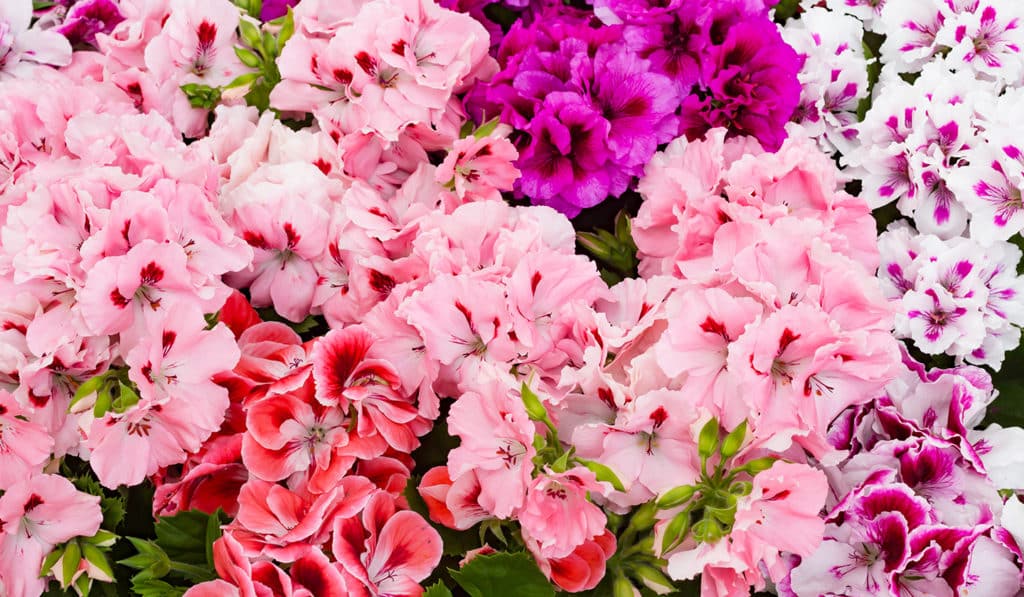

beyond the basics
-
soil & potting
All begonias like evenly moist, well-draining soil with some added organic matter. Plant wax begonia transplants 6 to 8 inches apart and others according to their mature size. Tubers can be started indoors by placing the tubers, hollow side up, 1 inch apart in a shallow tray with moist potting mix. Place the tray in a dark room and water just enough to keep the potting mix moist, but not soggy. Tubers should sprout in about 4 weeks and be moved to an area with bright light once the sprouts are about an inch tall. Only plant outdoors when there is no longer a threat of frost.
-
companion planting
Begonias look great planted together, or with cascading annuals like alyssum and lobelia. Try pairing them with Hosta or Bergenia in shade gardens.
-
blooms
When cutting back rhizomatous or wax types, make a clean, angled cut just above a leaf or flower node. To encourage fuller growth, younger plants (under 3 years) can be cut back to one or two nodes above the soil. Plants that are older should only be pruned lightly.
For cane begonias, pinch the tops when plants are about 6 inches tall to encourage bushier growth. Cut any canes that are much taller than the rest of the plant back to the soil. Remove old, brown, bare, or dead canes to the soil. Younger plants can be cut back by about 1/2.
Rex begonias require little pruning. Pinch back young plants to encourage fuller growth, and remove any leggy or bare stems as needed.
For all types, cut off spent begonia flowers about 1/2-inch below the flower to keep plants clean and healthy, as well as promote more blooms.
-
pest control
Susceptible to powdery mildew, mealybugs, spider mites, thrips, and whitefly. Stem rot and rhizome rot can be caused by overwatering and soggy soil.
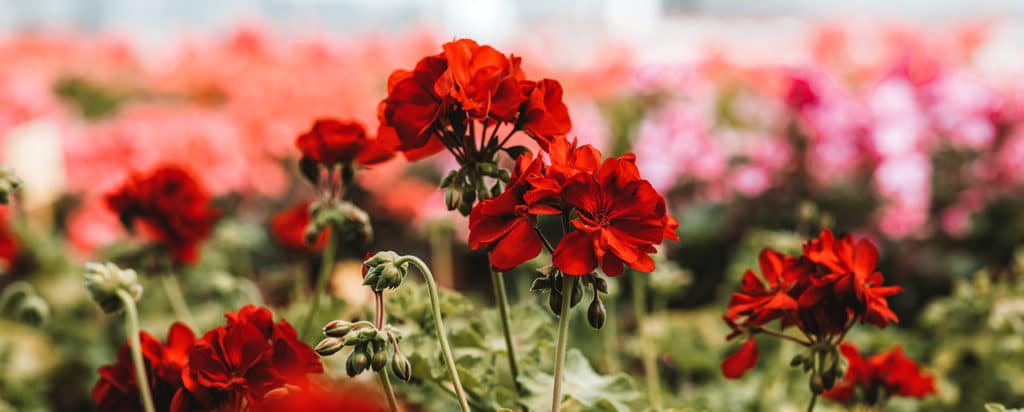
troubleshooting
-
spotted flowers?
Blooms may be damaged by improper watering. Your Begonia’s flowers are likely getting brown or transparent blotches where water drops have soaked through the petal. To prevent this, shield your petals when watering or be sure to hold the hose close to the soil versus above the plant.
-
white, powdery leaves?
This is mildew caused by a fungus that lives on the surface of your plant. Mildew will coat your Begonias in a white or gray powdery mold. Mildew will cause your Begonia’s leaves to discolour and drop off. To avoid this, be sure to allow adequate space between plants and collect any debris that falls around the base of the plant. Be sure not to overwater your plant!
-
dropping buds?
Could be caused by either over or under watering your plant, especially if they dry out completely between watering. Although tuberous begonias do best when the soil surface dries out slightly between waterings, try not to let them dry out completely. A sudden temperature change from hot to cold could also cause buds to drop off.
-
faded flowers?
Could be a result of a fungal disease that often results from poor ventilation, insufficient light or high humidity. Remove those faded flowers and be sure that your Begonias are planted in a well-ventilated area that receives adequate light, versus in a shady area. If the growing season is especially humid, gray mold may appear despite precautions. In such a case, destroy infected plant parts, and spray buds and blooms with flowable sulfur fungicide every 3 to 5 days.

begonias
aka begoniaceae or begonia semperflorens
Begonias are popular houseplants and shaded garden beds. They have tropical/sub-tropical origins, and are known for their interesting, asymmetrical leaves. They add a bright punch of colour to a garden bed because of their bright, small flowers and variegated leaves.
variations
Wax begonias, Tuberous begonias, Cane begonias, Rhizomatous begonias, Rex begonias
light
filtered sun
Partial shade or filtered light
water + feeding
not too thirsty
Regular watering is important for healthy plants. The soil should remain moist at all times, but not too wet, as this can cause root rot. Water at the base of the plant to keep the foliage dry and prevent leaf spot and fungal diseases. For general growing purposes, apply a balanced water-soluble fertilizer once a month in the growing season. For plants grown strictly for their foliage, like angel wings, use a fertilizer that is higher in nitrogen.
toxic
somewhat
Although its most toxic parts are underground, it’s still best to keep begonias out of reach of your pets
size
mostly medium
Wax begonias: Wax begonias are typically grown as annuals, reaching 6 to 12 inches tall and wide. Tuberous begonias: They also have a larger growth habit than wax begonias, growing 12 to 18 inches tall as houseplants and up to 3 feet or more in outdoor containers. Cane begonias: Their size varies with growing conditions, from 6- to 12-inch houseplants to bushy plants up to 5 feet. Rhizomatous begonias: Sizes vary from just a few inches to large plants up to 3 feet tall and wide. Rex begonias: generally reach 12 to 18 inches tall and wide.
pro tip
happily root-bound?
Potted begonias prefer to be slightly root-bound rather than given too much room. Only repot when necessary, and preferably in spring before plants are moved outside and start actively growing. Select darker-leaved varieties or types with improved heat and sun tolerance for sunnier spots.
fun fact
cousins to pumpkins
The flower is related to pumpkins, squash, gourds, cucumbers and melons. Tuberous and wax begonias are edible and have a citrusy taste. The name Begonia honours Michel Begon, a former governor and amateur botanist.
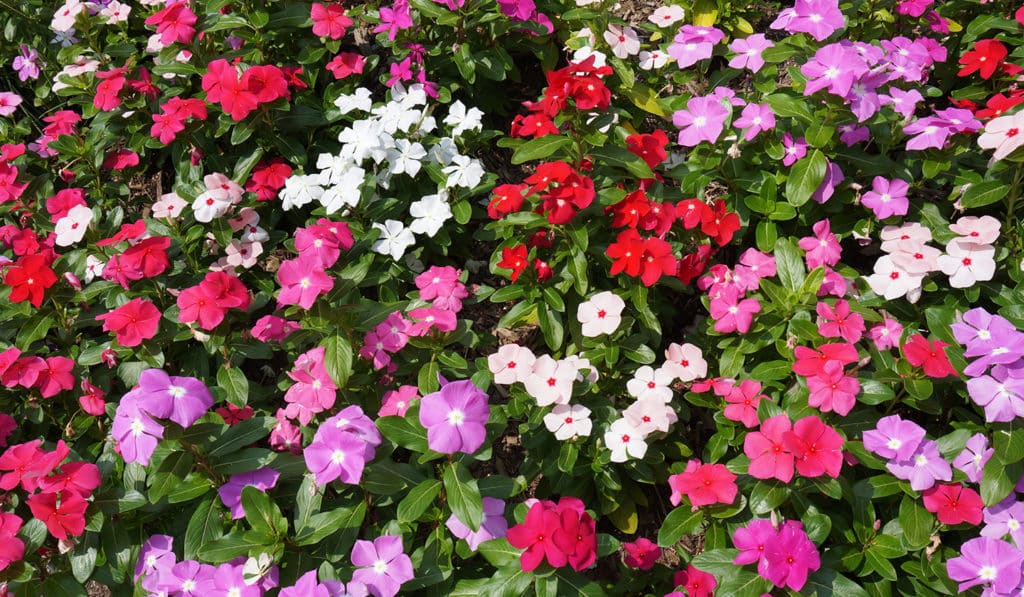

beyond the basics
-
soil & potting
All begonias like evenly moist, well-draining soil with some added organic matter. Plant wax begonia transplants 6 to 8 inches apart and others according to their mature size. Tubers can be started indoors by placing the tubers, hollow side up, 1 inch apart in a shallow tray with moist potting mix. Place the tray in a dark room and water just enough to keep the potting mix moist, but not soggy. Tubers should sprout in about 4 weeks and be moved to an area with bright light once the sprouts are about an inch tall. Only plant outdoors when there is no longer a threat of frost.
-
companion planting
Begonias look great planted together, or with cascading annuals like alyssum and lobelia. Try pairing them with Hosta or Bergenia in shade gardens.
-
blooms
When cutting back rhizomatous or wax types, make a clean, angled cut just above a leaf or flower node. To encourage fuller growth, younger plants (under 3 years) can be cut back to one or two nodes above the soil. Plants that are older should only be pruned lightly.
For cane begonias, pinch the tops when plants are about 6 inches tall to encourage bushier growth. Cut any canes that are much taller than the rest of the plant back to the soil. Remove old, brown, bare, or dead canes to the soil. Younger plants can be cut back by about 1/2.
Rex begonias require little pruning. Pinch back young plants to encourage fuller growth, and remove any leggy or bare stems as needed.
For all types, cut off spent begonia flowers about 1/2-inch below the flower to keep plants clean and healthy, as well as promote more blooms.
-
pest control
Susceptible to powdery mildew, mealybugs, spider mites, thrips, and whitefly. Stem rot and rhizome rot can be caused by overwatering and soggy soil.
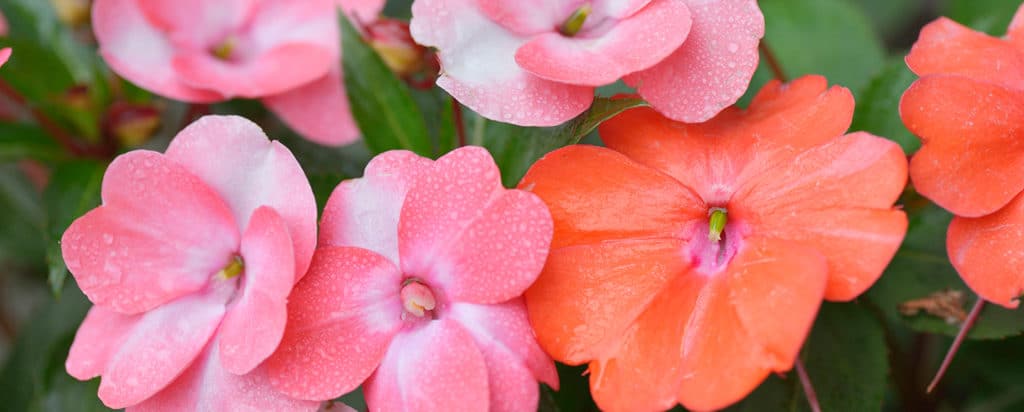
troubleshooting
-
spotted flowers?
Blooms may be damaged by improper watering. Your Begonia’s flowers are likely getting brown or transparent blotches where water drops have soaked through the petal. To prevent this, shield your petals when watering or be sure to hold the hose close to the soil versus above the plant.
-
white, powdery leaves?
This is mildew caused by a fungus that lives on the surface of your plant. Mildew will coat your Begonias in a white or gray powdery mold. Mildew will cause your Begonia’s leaves to discolour and drop off. To avoid this, be sure to allow adequate space between plants and collect any debris that falls around the base of the plant. Be sure not to overwater your plant!
-
dropping buds?
Could be caused by either over or under watering your plant, especially if they dry out completely between watering. Although tuberous begonias do best when the soil surface dries out slightly between waterings, try not to let them dry out completely. A sudden temperature change from hot to cold could also cause buds to drop off.
-
faded flowers?
Could be a result of a fungal disease that often results from poor ventilation, insufficient light or high humidity. Remove those faded flowers and be sure that your Begonias are planted in a well-ventilated area that receives adequate light, versus in a shady area. If the growing season is especially humid, gray mold may appear despite precautions. In such a case, destroy infected plant parts, and spray buds and blooms with flowable sulfur fungicide every 3 to 5 days.

begonias
aka begoniaceae or begonia semperflorens
Begonias are popular houseplants and shaded garden beds. They have tropical/sub-tropical origins, and are known for their interesting, asymmetrical leaves. They add a bright punch of colour to a garden bed because of their bright, small flowers and variegated leaves.
variations
Wax begonias, Tuberous begonias, Cane begonias, Rhizomatous begonias, Rex begonias
light
filtered sun
Partial shade or filtered light
water + feeding
not too thirsty
Regular watering is important for healthy plants. The soil should remain moist at all times, but not too wet, as this can cause root rot. Water at the base of the plant to keep the foliage dry and prevent leaf spot and fungal diseases. For general growing purposes, apply a balanced water-soluble fertilizer once a month in the growing season. For plants grown strictly for their foliage, like angel wings, use a fertilizer that is higher in nitrogen.
toxic
somewhat
Although its most toxic parts are underground, it’s still best to keep begonias out of reach of your pets
size
mostly medium
Wax begonias: Wax begonias are typically grown as annuals, reaching 6 to 12 inches tall and wide. Tuberous begonias: They also have a larger growth habit than wax begonias, growing 12 to 18 inches tall as houseplants and up to 3 feet or more in outdoor containers. Cane begonias: Their size varies with growing conditions, from 6- to 12-inch houseplants to bushy plants up to 5 feet. Rhizomatous begonias: Sizes vary from just a few inches to large plants up to 3 feet tall and wide. Rex begonias: generally reach 12 to 18 inches tall and wide.
pro tip
happily root-bound?
Potted begonias prefer to be slightly root-bound rather than given too much room. Only repot when necessary, and preferably in spring before plants are moved outside and start actively growing. Select darker-leaved varieties or types with improved heat and sun tolerance for sunnier spots.
fun fact
cousins to pumpkins
The flower is related to pumpkins, squash, gourds, cucumbers and melons. Tuberous and wax begonias are edible and have a citrusy taste. The name Begonia honours Michel Begon, a former governor and amateur botanist.
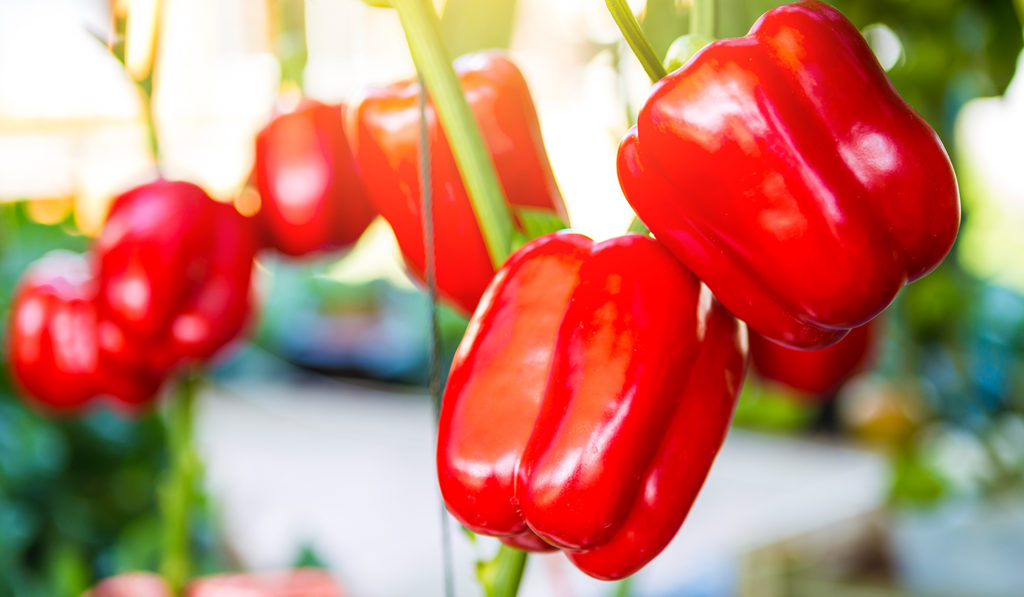

beyond the basics
-
soil & potting
All begonias like evenly moist, well-draining soil with some added organic matter. Plant wax begonia transplants 6 to 8 inches apart and others according to their mature size. Tubers can be started indoors by placing the tubers, hollow side up, 1 inch apart in a shallow tray with moist potting mix. Place the tray in a dark room and water just enough to keep the potting mix moist, but not soggy. Tubers should sprout in about 4 weeks and be moved to an area with bright light once the sprouts are about an inch tall. Only plant outdoors when there is no longer a threat of frost.
-
companion planting
Begonias look great planted together, or with cascading annuals like alyssum and lobelia. Try pairing them with Hosta or Bergenia in shade gardens.
-
blooms
When cutting back rhizomatous or wax types, make a clean, angled cut just above a leaf or flower node. To encourage fuller growth, younger plants (under 3 years) can be cut back to one or two nodes above the soil. Plants that are older should only be pruned lightly.
For cane begonias, pinch the tops when plants are about 6 inches tall to encourage bushier growth. Cut any canes that are much taller than the rest of the plant back to the soil. Remove old, brown, bare, or dead canes to the soil. Younger plants can be cut back by about 1/2.
Rex begonias require little pruning. Pinch back young plants to encourage fuller growth, and remove any leggy or bare stems as needed.
For all types, cut off spent begonia flowers about 1/2-inch below the flower to keep plants clean and healthy, as well as promote more blooms.
-
pest control
Susceptible to powdery mildew, mealybugs, spider mites, thrips, and whitefly. Stem rot and rhizome rot can be caused by overwatering and soggy soil.
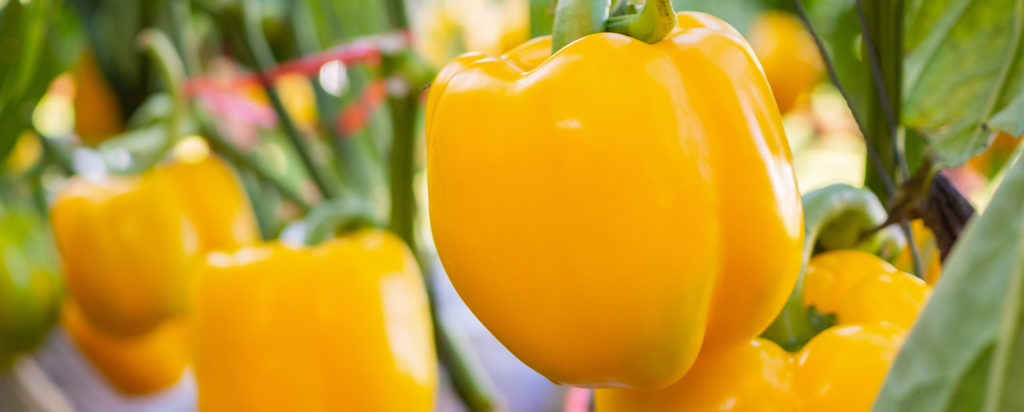
troubleshooting
-
spotted flowers?
Blooms may be damaged by improper watering. Your Begonia’s flowers are likely getting brown or transparent blotches where water drops have soaked through the petal. To prevent this, shield your petals when watering or be sure to hold the hose close to the soil versus above the plant.
-
white, powdery leaves?
This is mildew caused by a fungus that lives on the surface of your plant. Mildew will coat your Begonias in a white or gray powdery mold. Mildew will cause your Begonia’s leaves to discolour and drop off. To avoid this, be sure to allow adequate space between plants and collect any debris that falls around the base of the plant. Be sure not to overwater your plant!
-
dropping buds?
Could be caused by either over or under watering your plant, especially if they dry out completely between watering. Although tuberous begonias do best when the soil surface dries out slightly between waterings, try not to let them dry out completely. A sudden temperature change from hot to cold could also cause buds to drop off.
-
faded flowers?
Could be a result of a fungal disease that often results from poor ventilation, insufficient light or high humidity. Remove those faded flowers and be sure that your Begonias are planted in a well-ventilated area that receives adequate light, versus in a shady area. If the growing season is especially humid, gray mold may appear despite precautions. In such a case, destroy infected plant parts, and spray buds and blooms with flowable sulfur fungicide every 3 to 5 days.

begonias
aka begoniaceae or begonia semperflorens
Begonias are popular houseplants and shaded garden beds. They have tropical/sub-tropical origins, and are known for their interesting, asymmetrical leaves. They add a bright punch of colour to a garden bed because of their bright, small flowers and variegated leaves.
variations
Wax begonias, Tuberous begonias, Cane begonias, Rhizomatous begonias, Rex begonias
light
filtered sun
Partial shade or filtered light
water + feeding
not too thirsty
Regular watering is important for healthy plants. The soil should remain moist at all times, but not too wet, as this can cause root rot. Water at the base of the plant to keep the foliage dry and prevent leaf spot and fungal diseases. For general growing purposes, apply a balanced water-soluble fertilizer once a month in the growing season. For plants grown strictly for their foliage, like angel wings, use a fertilizer that is higher in nitrogen.
toxic
somewhat
Although its most toxic parts are underground, it’s still best to keep begonias out of reach of your pets
size
mostly medium
Wax begonias: Wax begonias are typically grown as annuals, reaching 6 to 12 inches tall and wide. Tuberous begonias: They also have a larger growth habit than wax begonias, growing 12 to 18 inches tall as houseplants and up to 3 feet or more in outdoor containers. Cane begonias: Their size varies with growing conditions, from 6- to 12-inch houseplants to bushy plants up to 5 feet. Rhizomatous begonias: Sizes vary from just a few inches to large plants up to 3 feet tall and wide. Rex begonias: generally reach 12 to 18 inches tall and wide.
pro tip
happily root-bound?
Potted begonias prefer to be slightly root-bound rather than given too much room. Only repot when necessary, and preferably in spring before plants are moved outside and start actively growing. Select darker-leaved varieties or types with improved heat and sun tolerance for sunnier spots.
fun fact
cousins to pumpkins
The flower is related to pumpkins, squash, gourds, cucumbers and melons. Tuberous and wax begonias are edible and have a citrusy taste. The name Begonia honours Michel Begon, a former governor and amateur botanist.


beyond the basics
-
soil & potting
All begonias like evenly moist, well-draining soil with some added organic matter. Plant wax begonia transplants 6 to 8 inches apart and others according to their mature size. Tubers can be started indoors by placing the tubers, hollow side up, 1 inch apart in a shallow tray with moist potting mix. Place the tray in a dark room and water just enough to keep the potting mix moist, but not soggy. Tubers should sprout in about 4 weeks and be moved to an area with bright light once the sprouts are about an inch tall. Only plant outdoors when there is no longer a threat of frost.
-
companion planting
Begonias look great planted together, or with cascading annuals like alyssum and lobelia. Try pairing them with Hosta or Bergenia in shade gardens.
-
blooms
When cutting back rhizomatous or wax types, make a clean, angled cut just above a leaf or flower node. To encourage fuller growth, younger plants (under 3 years) can be cut back to one or two nodes above the soil. Plants that are older should only be pruned lightly.
For cane begonias, pinch the tops when plants are about 6 inches tall to encourage bushier growth. Cut any canes that are much taller than the rest of the plant back to the soil. Remove old, brown, bare, or dead canes to the soil. Younger plants can be cut back by about 1/2.
Rex begonias require little pruning. Pinch back young plants to encourage fuller growth, and remove any leggy or bare stems as needed.
For all types, cut off spent begonia flowers about 1/2-inch below the flower to keep plants clean and healthy, as well as promote more blooms.
-
pest control
Susceptible to powdery mildew, mealybugs, spider mites, thrips, and whitefly. Stem rot and rhizome rot can be caused by overwatering and soggy soil.
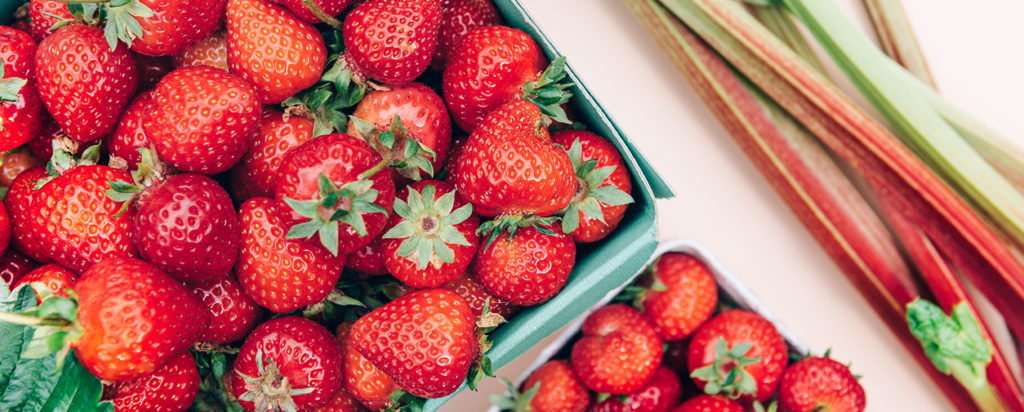
troubleshooting
-
spotted flowers?
Blooms may be damaged by improper watering. Your Begonia’s flowers are likely getting brown or transparent blotches where water drops have soaked through the petal. To prevent this, shield your petals when watering or be sure to hold the hose close to the soil versus above the plant.
-
white, powdery leaves?
This is mildew caused by a fungus that lives on the surface of your plant. Mildew will coat your Begonias in a white or gray powdery mold. Mildew will cause your Begonia’s leaves to discolour and drop off. To avoid this, be sure to allow adequate space between plants and collect any debris that falls around the base of the plant. Be sure not to overwater your plant!
-
dropping buds?
Could be caused by either over or under watering your plant, especially if they dry out completely between watering. Although tuberous begonias do best when the soil surface dries out slightly between waterings, try not to let them dry out completely. A sudden temperature change from hot to cold could also cause buds to drop off.
-
faded flowers?
Could be a result of a fungal disease that often results from poor ventilation, insufficient light or high humidity. Remove those faded flowers and be sure that your Begonias are planted in a well-ventilated area that receives adequate light, versus in a shady area. If the growing season is especially humid, gray mold may appear despite precautions. In such a case, destroy infected plant parts, and spray buds and blooms with flowable sulfur fungicide every 3 to 5 days.

begonias
aka begoniaceae or begonia semperflorens
Begonias are popular houseplants and shaded garden beds. They have tropical/sub-tropical origins, and are known for their interesting, asymmetrical leaves. They add a bright punch of colour to a garden bed because of their bright, small flowers and variegated leaves.
variations
Wax begonias, Tuberous begonias, Cane begonias, Rhizomatous begonias, Rex begonias
light
filtered sun
Partial shade or filtered light
water + feeding
not too thirsty
Regular watering is important for healthy plants. The soil should remain moist at all times, but not too wet, as this can cause root rot. Water at the base of the plant to keep the foliage dry and prevent leaf spot and fungal diseases. For general growing purposes, apply a balanced water-soluble fertilizer once a month in the growing season. For plants grown strictly for their foliage, like angel wings, use a fertilizer that is higher in nitrogen.
toxic
somewhat
Although its most toxic parts are underground, it’s still best to keep begonias out of reach of your pets
size
mostly medium
Wax begonias: Wax begonias are typically grown as annuals, reaching 6 to 12 inches tall and wide. Tuberous begonias: They also have a larger growth habit than wax begonias, growing 12 to 18 inches tall as houseplants and up to 3 feet or more in outdoor containers. Cane begonias: Their size varies with growing conditions, from 6- to 12-inch houseplants to bushy plants up to 5 feet. Rhizomatous begonias: Sizes vary from just a few inches to large plants up to 3 feet tall and wide. Rex begonias: generally reach 12 to 18 inches tall and wide.
pro tip
happily root-bound?
Potted begonias prefer to be slightly root-bound rather than given too much room. Only repot when necessary, and preferably in spring before plants are moved outside and start actively growing. Select darker-leaved varieties or types with improved heat and sun tolerance for sunnier spots.
fun fact
cousins to pumpkins
The flower is related to pumpkins, squash, gourds, cucumbers and melons. Tuberous and wax begonias are edible and have a citrusy taste. The name Begonia honours Michel Begon, a former governor and amateur botanist.
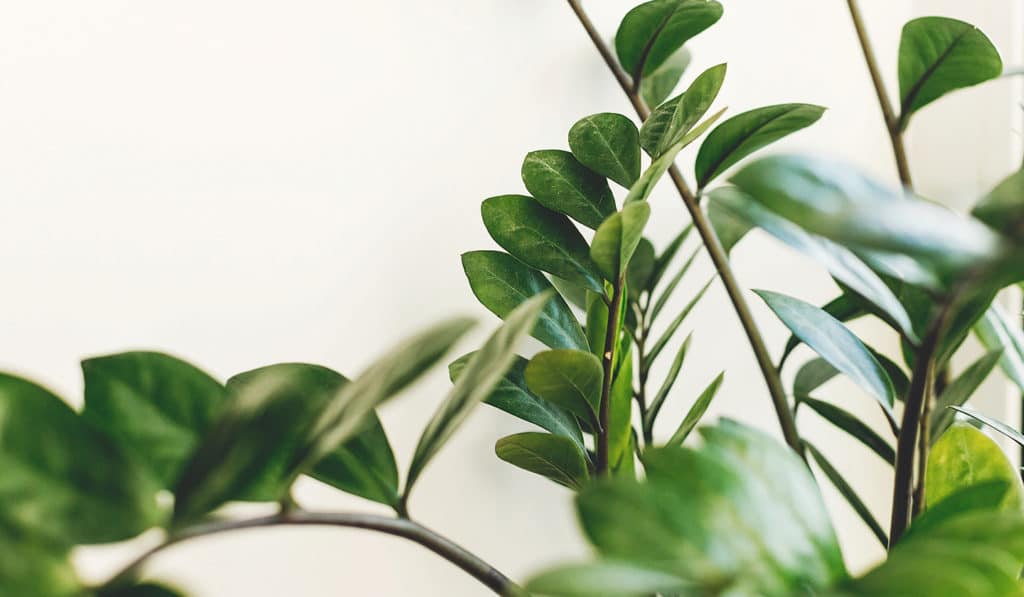
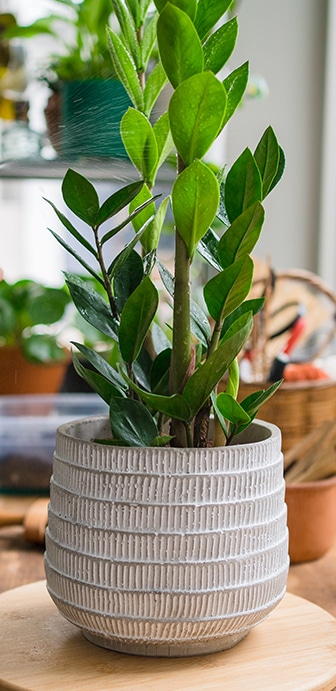
beyond the basics
-
soil & potting
ZZ prefers a light, well-draining potting soil like Miracle-Gro Cactus, Palm and Succulent Potting Mix. Or, use regular potting soil and add some potting sand or perlite. Ensure the pot has good drainage and avoid standing water. Empty drainage trays if you see water collecting.
-
when to repot
In the right light, ZZ grows quickly. Amazingly, they actually enjoy being a little rootbound, so you don’t need to repot as often as other plants. Repot every 3 to 4 years in the Spring, especially with younger plants. Increase pot by 2 inches every time. If you want to slow down growth, do some root trimming. In later years you can replace the top couple inches of soil instead of completely repotting.
-
propagation
Even propagation is easy with ZZ. Dig up the thick root ball and cut it in half. You can technically propagate your ZZ via stem and leaf cuttings, but it’s so much harder than cutting the root ball that we don’t recommend it.
-
pest control
Can get mealybugs and spider mites. When you’re dusting those glossy leaves, inspect the undersides. Check out our Pest control section in Plant 101 for how to identify and deal with pests on your plant!

troubleshooting
-
why the yellowing leaves?
Overwatering. By far the most common problem with ZZ. Especially in Winter when it doesn’t need (or want) much water at all. If the plant has been sitting in water, it may have root rot. This problem is no big deal if you catch it early. First, stop watering! Let’s dry out that soil. Check your pot’s drainage. Does it have a hole that allows excess water to escape? Help things dry by poking holes in the soil. This will get oxygen to the roots. You can also put the pot (with drainage holes) in a tray that’s lined with a layer of dry soil. It acts like a sponge to draw out extra moisture. Now, let’s check for root rot. Dig down and cut out any that look affected. If things are really bad, consider repotting entirely with new soil. Moving forward, allow ZZ’s soil to dry between watering. The top couple inches should be dry to the touch. For more information check out our Plant 101 section.
-
why do I have many dropping leaves?
Probably stressed. ZZ is tough but not invincible. If you’ve moved it recently that may have stressed it out. Did you just bring it home from the nursery? That’s a big change. Leaf drop is most common when ZZ was in shade and suddenly put in full sun. Ease you plant to new area when you can. If you haven’t moved it recently, check for wet or totally bone-dry soil. See above for proper watering regimen.
-
what’s with the brown patches on leaves?
Sunburn. It can handle some direct sun, but long Summer exposure can burn even the mighty ZZ. Try moving your plant somewhere that’s still bright, but with indirect light.
-
why isn’t it growing?
Not enough light. ZZ survives well in low light, but it takes bright light for ZZ to thrive and grow. If you’re happy with the size, keep it shady. If you want to see ZZ’s impressive growth in action, move it somewhere with plenty of bright and mostly indirect light. Make this change gradually if you can. Increase your watering (but just a bit) to suit the increased light.
-
why the soft or drooping stems?
Again, overwatering. This is stem rot, spreading up from root rot. Remove all those mushy stems or trim away anything that looks like rot. Now let’s dry the soil and check the roots. Check your pot’s drainage. Does it have a hole that allows excess water to escape? Help things dry by poking holes in the soil. This will get oxygen to the roots. You can also put the pot (with drainage holes) in a tray that’s lined with a layer of dry soil. It acts like a sponge to draw out extra moisture. Now, let’s check for root rot. Dig down and cut out any that look affected. If things are really bad, consider repotting entirely with new soil. Moving forward, allow ZZ’s soil to dry between watering. The top couple inches should be dry to the touch. For more information check out our Plant 101 section.

begonias
aka begoniaceae or begonia semperflorens
Begonias are popular houseplants and shaded garden beds. They have tropical/sub-tropical origins, and are known for their interesting, asymmetrical leaves. They add a bright punch of colour to a garden bed because of their bright, small flowers and variegated leaves.
variations
Wax begonias, Tuberous begonias, Cane begonias, Rhizomatous begonias, Rex begonias
light
filtered sun
Partial shade or filtered light
water + feeding
not too thirsty
Regular watering is important for healthy plants. The soil should remain moist at all times, but not too wet, as this can cause root rot. Water at the base of the plant to keep the foliage dry and prevent leaf spot and fungal diseases. For general growing purposes, apply a balanced water-soluble fertilizer once a month in the growing season. For plants grown strictly for their foliage, like angel wings, use a fertilizer that is higher in nitrogen.
toxic
somewhat
Although its most toxic parts are underground, it’s still best to keep begonias out of reach of your pets
size
mostly medium
Wax begonias: Wax begonias are typically grown as annuals, reaching 6 to 12 inches tall and wide. Tuberous begonias: They also have a larger growth habit than wax begonias, growing 12 to 18 inches tall as houseplants and up to 3 feet or more in outdoor containers. Cane begonias: Their size varies with growing conditions, from 6- to 12-inch houseplants to bushy plants up to 5 feet. Rhizomatous begonias: Sizes vary from just a few inches to large plants up to 3 feet tall and wide. Rex begonias: generally reach 12 to 18 inches tall and wide.
pro tip
happily root-bound?
Potted begonias prefer to be slightly root-bound rather than given too much room. Only repot when necessary, and preferably in spring before plants are moved outside and start actively growing. Select darker-leaved varieties or types with improved heat and sun tolerance for sunnier spots.
fun fact
cousins to pumpkins
The flower is related to pumpkins, squash, gourds, cucumbers and melons. Tuberous and wax begonias are edible and have a citrusy taste. The name Begonia honours Michel Begon, a former governor and amateur botanist.
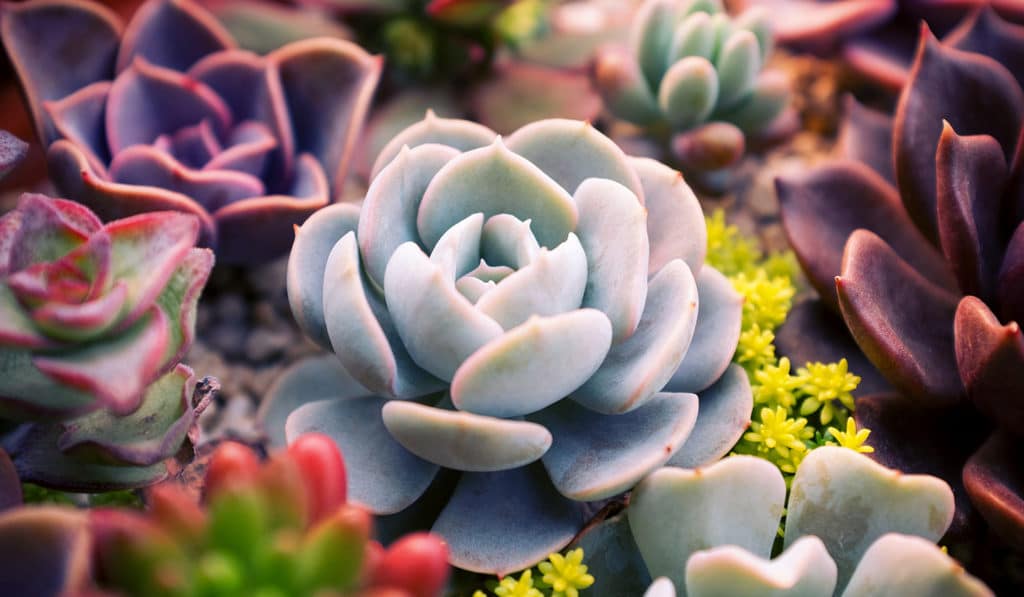
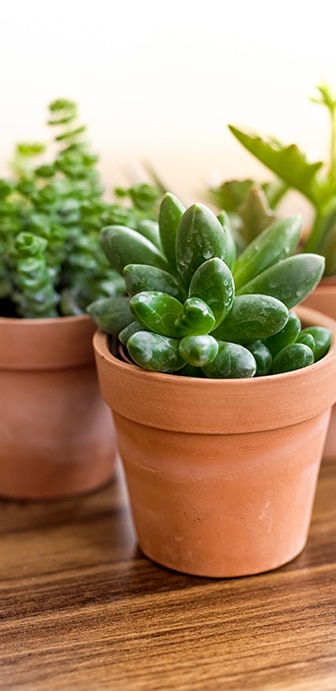
beyond the basics
-
soil & potting
These desert dwellers prefer a light, well-draining potting soil like Miracle-Gro Cactus, Palm and Succulent Potting Mix. Or, use regular potting soil and add some potting sand or perlite. A layer of sand on the top will help prevent rot. Ensure the pot has good drainage and aloe should never sit in water. Empty drainage trays if you see water collecting.
-
when to repot
Repot every 1 to 2 years in the Spring, especially with younger plants. Increase pot diameter by 2 inches every time. Want them to stay cute and little? You can stunt the growth by root trimming. In later years you can replace the top couple inches of soil instead of completely repotting.
-
propagation
Making new succulent plant babies is easy. In fact many propagate on their own. You will notice little mini versions starting grow. These “pups” can be gently separated potted as a new plant. If you’re not getting pups, remove a leaf, let it dry for a couple of days and place it on some moist soil. It should sprout roots, and voila! You have an ultra mini plant.
-
pest control
Succulents don’t typically suffer from pests, but they can sometimes get bugs. Gnats are most likely. Inspect those juicy little leaves regularly. Check out our Pest control section in Plant 101 for how to identify and deal with pests on your plant!
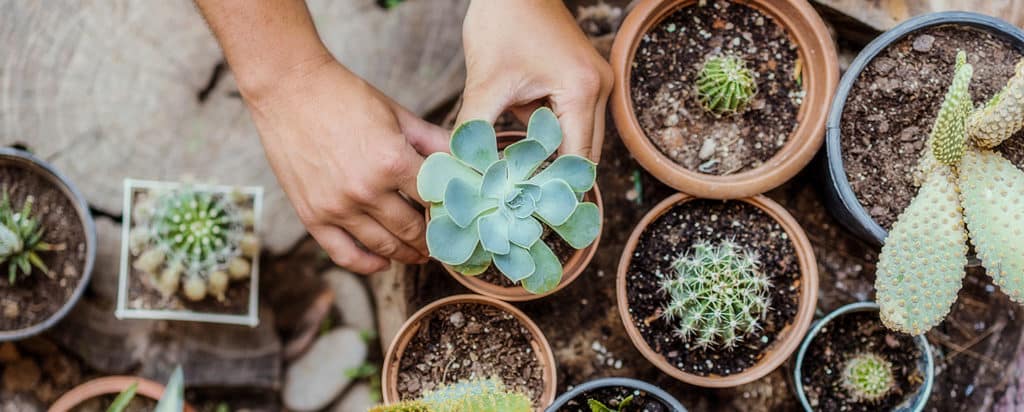
troubleshooting
-
why are the eaves turning brown, red or reddish brown?
A couple of possibilities. Maybe too much direct summer sun. Or possibly overwatering or root damage. First, moving your plant to a still-bright but less sun-blasted spot. Reduce the watering and follow our watering instructions above. If your succulent buddy still doesn’t bounce back, check for root damage.
-
what’s causing these dark spots? brown or mushy leaves?
Almost certainly too much water. This problem is no big deal if you catch it early. First, stop watering! Let’s dry out that soil. Check your pot’s drainage. Does it have a hole that allows excess water to escape? Help things dry by poking holes in the soil. This will get oxygen to the roots. You can also put the pot (with drainage holes) in a tray that’s lined with a layer of dry soil. It acts like a sponge to draw out extra moisture. Now, let’s check for root rot. Dig down and cut out any that look affected. If things are really bad, consider repotting entirely with new soil. Moving forward, water only when the soil is totally dry and make sure you water the soil, not the leaves. Water can collect between the leaves at its base, and start to rot. A thin layer of sand on top of the soil can reduce pooling water up top.
For more information check out our Plant 101 section.
-
pale or yellowing leaves?
Not enough light and/or overwatering. If the whole plant has yellowed or gone pale, it definitely needs more light. Move your friend to a brighter spot and resist the urge to overwater. Let the top two inches of soil get dry before watering again.
-
ew, what’s with the shrunken, wrinkled leaves?
Your plant needs a drink. Underwatering a succulent is hard to do, but it does happen. Give small amounts of water for three days in a row. Make sure you do this at soil level, not poured on the leaves. This is the ONE TIME it’s okay to do a little misting. A little does a lot. Resist the urge to water all at once! Your friend will plump up in a few days.
-
why isn’t my succulent growing?
Not enough light. It takes a lot of bright (mostly indirect) light to get succulents growing. If you’re not noticing any growth, or the new growth looks pale, it’s time to move to brighter spot. You may need slightly more frequent watering after the move. Note, succulents grow in slow motion at the best of times, so a little patience goes a long way.

begonias
aka begoniaceae or begonia semperflorens
Begonias are popular houseplants and shaded garden beds. They have tropical/sub-tropical origins, and are known for their interesting, asymmetrical leaves. They add a bright punch of colour to a garden bed because of their bright, small flowers and variegated leaves.
variations
Wax begonias, Tuberous begonias, Cane begonias, Rhizomatous begonias, Rex begonias
light
filtered sun
Partial shade or filtered light
water + feeding
not too thirsty
Regular watering is important for healthy plants. The soil should remain moist at all times, but not too wet, as this can cause root rot. Water at the base of the plant to keep the foliage dry and prevent leaf spot and fungal diseases. For general growing purposes, apply a balanced water-soluble fertilizer once a month in the growing season. For plants grown strictly for their foliage, like angel wings, use a fertilizer that is higher in nitrogen.
toxic
somewhat
Although its most toxic parts are underground, it’s still best to keep begonias out of reach of your pets
size
mostly medium
Wax begonias: Wax begonias are typically grown as annuals, reaching 6 to 12 inches tall and wide. Tuberous begonias: They also have a larger growth habit than wax begonias, growing 12 to 18 inches tall as houseplants and up to 3 feet or more in outdoor containers. Cane begonias: Their size varies with growing conditions, from 6- to 12-inch houseplants to bushy plants up to 5 feet. Rhizomatous begonias: Sizes vary from just a few inches to large plants up to 3 feet tall and wide. Rex begonias: generally reach 12 to 18 inches tall and wide.
pro tip
happily root-bound?
Potted begonias prefer to be slightly root-bound rather than given too much room. Only repot when necessary, and preferably in spring before plants are moved outside and start actively growing. Select darker-leaved varieties or types with improved heat and sun tolerance for sunnier spots.
fun fact
cousins to pumpkins
The flower is related to pumpkins, squash, gourds, cucumbers and melons. Tuberous and wax begonias are edible and have a citrusy taste. The name Begonia honours Michel Begon, a former governor and amateur botanist.
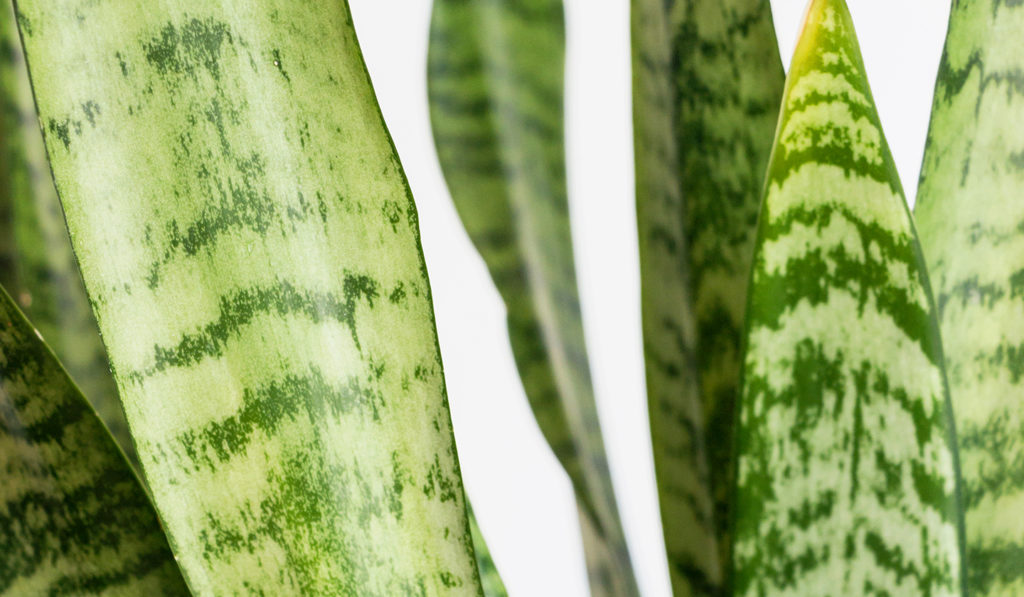
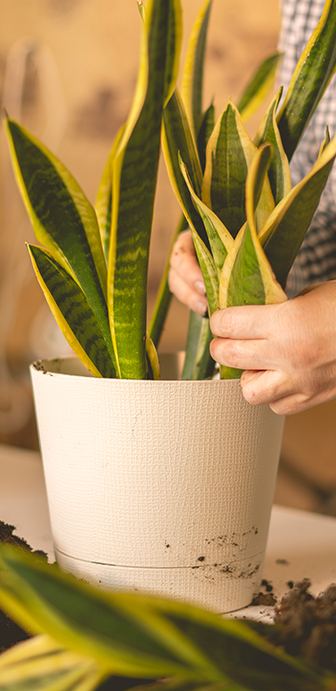
beyond the basics
-
soil & potting
It’s a desert plant, so use a light, well-draining potting soil like Miracle-Gro Cactus, Palm and Succulent Potting Mix. Or, use regular potting soil and add some potting sand or perlite. A layer of sand on the top will help prevent rot. Ensure the pot has good drainage. Snakes should never sit in water. Empty drainage trays if you see water collecting.
-
when to repot
Every 2 to 3 years in the Spring, especially in the earlier years. Increase the pot size by 2 inches each repotting. In later years you can replace the top couple inches of soil instead of completely repotting. Snake growing too fast? Slow the growth by trimming the roots.
-
propagation
Grab a sharp knife or scissors, find one of the healthiest leaves, and cut it off at the base of the plant. Then cut the leaf into multiple horizontal strips (about 3 inches each). Let the ends dry for two days then put them in water to stimulate root growth. This step could take 2 to 3 weeks. When you’ve got roots, you’re ready to pot.
-
pest control
Mealybugs are most common. When you do your regular dusting, inspect the leaves. Check out our Pest control section in Plant 101 for how to identify and deal with pests on your plant!
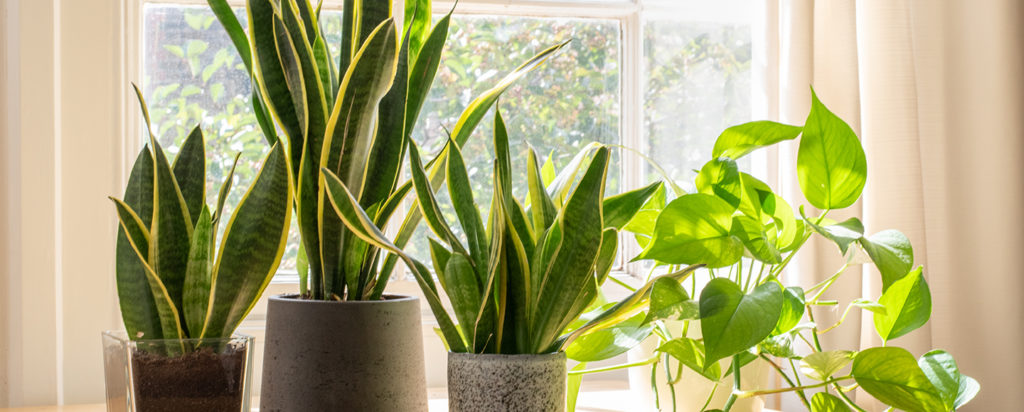
troubleshooting
-
why are the leaves falling sideways?
Multiple possibilities. All easily fixed. Firstly, this may not be a problem at all. Overly mature leaves naturally fall away to make room new growth. But if many leaves are falling over before their time, it’s probably over or under watering. If the soil is bone dry, add a moderate amount of water for a few days in a row. Then be more diligent with your watering routine. If the soil is soaked, check your drainage and let the soil fully dry before starting a better routine. Light issues: Snake plants do well in low light but if they’re getting no light leaves may start to keel over. Move into some nice, bright, indirect light. Other causes? Maybe your Snake plant has outgrown its pot. This can cause it to become root-bound. It’s time to repot in something at least 2 inches wider.
-
why do I have yellowing leaves?
Probably overwatering. Are the leaves also a bit mushy? These are signs of root rot. Not to worry, when caught early this is easily fixable. Reduce watering and ensure the soil dries out before watering. Check your pot’s drainage. Does it have a hole that allows excess water to escape? Help things dry by poking holes in the soil. This will get oxygen to the roots. You can also put the pot (with drainage holes) in a tray that’s lined with a layer of dry soil. It acts like a sponge to draw out extra moisture. Now, let’s check for root rot. Dig down and cut out any that look affected. If things are really bad, consider repotting entirely with new soil. For more information check out our Plant 101 section.
-
why does this snake have wrinkled leaves?
Under-watering. Check the soil. It’s probably bone dry. Instead of dousing it all at once. Give your Snake plant a medium amount of water three days in a row. Nice and easy. Make sure it’s never sitting in pools of water. Those droopy leaves should rebound by day three.

